Reimagining the revenue cycle today to benefit us tomorrow
As healthcare organizations tackle the complex challenge of COVID-19 recovery, revenue cycle will play a vital role in supporting their return to financial health. The pandemic has the potential to accelerate investment in new technologies and capabilities that already were on the horizon for revenue cycle, from artificial intelligence (AI) to robotic process automation (RPA) to advanced analytics that empower providers to take a pulse on reimbursement like never before.
What are the new innovations we’ll see in healthcare revenue cycle following COVID-19 — and how has the pandemic changed the ways in which revenue cycle leaders think about technology investment? In this HFMA Annual roundtable, sponsored by Cerner, eight revenue cycle leaders share their insight.
What are the most important and/or disruptive technologies that will change the revenue cycle?
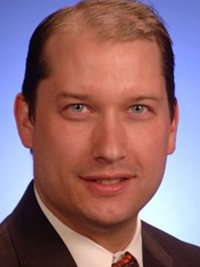
David Bittner, senior vice president and chief revenue officer, Trinity Health: I definitely think that RPA and artificial intelligence have a significant opportunity to disrupt and change what’s going on currently in the revenue cycle. We’re looking at ways for colleagues to add more value by removing the more transactional work and replacing it with a more analytical approach — really analyzing the information rather than just putting it together — and in turn, removing the need for manual interventions that have the potential to introduce inaccuracies into the data. Both AI and RPA will enable revenue cycle teams to quickly access more accurate information. They are probably the most disruptive innovations in healthcare revenue cycle right now.
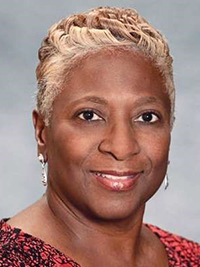
Sandra Johnson, vice president, revenue cycle management, Grady Health System: I agree with David. We’ve been working with a couple of “think tanks” around ways to use AI in denials management so we’ll know which claims will be denied before they ever go out the door. If we can get to the point where we can predict and prevent denials before they occur and do so in a highly accurate way, that will be a game changer.

Eddie Read, CFO, Hamilton General Hospital: Critical access hospitals were behind the curve in AI adoption in revenue cycle — we let the big hospitals work it out first, and then we responded. Now, we’re developing ways to use advanced technologies and data to determine our managed care contracts more accurately, efficiently respond to requests for price transparency and provide accurate patient estimates. As a small hospital, it’s very difficult to implement these capabilities when you don’t have the infrastructure available, like you would in a big system.
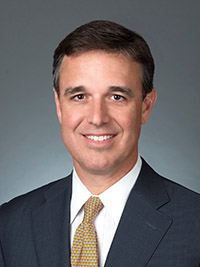
Jeff Limbocker, CFO, Franciscan Missionaries of Our Lady Health System: We have a team and an outside vendor that is working with us to use bots in revenue cycle. We’ve concentrated on small projects on the denials side, seeking ways to push things through automatically that we used to touch manually. For us, automation of this type has been nice. We’ll probably expand our use of automation in revenue cycle because it has been a real timesaver.
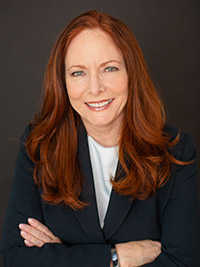
Pamela Gallagher, CFO, Hardin Memorial Hospital: I see AI being applied to price transparency. While it’s a real niche market right now, if we get to a point where consumers can buy a healthcare service online, put it in their cart, pay for it and have it performed in a hospital, we could reduce a lot of costs throughout the industry. I think we’re at the tipping point for an innovation like this.
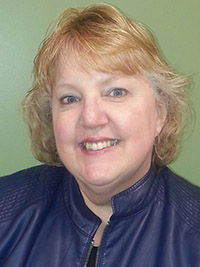
Kathy Peterson, associate vice president, revenue cycle, the University of Vermont Health Network — Champlain Valley Physicians Hospital and Alice Hyde Medical Center: The self-serve tools that come out in the future will be widely accepted and used by patients. There are already a lot of tools around self-check-in and scheduling and paying copays, but the technology needs to become more widely available at all healthcare organizations. That will help to gain efficiency in revenue cycle, from access through billing, and it will reduce costs.

Chuck Alsdurf, director, Healthcare Finance Policy, HFMA: One thing I’m not hearing about in this discussion is blockchain. What do you think about blockchain? Is it worth the investment?
Johnson: We use it for eligibility, and it works pretty well. We have had a couple of problems in instances where patients have the same last name and date of birth. You can end up with the wrong person sometimes, but over the past two years, it has been a real timesaver for us.
Bittner: I do see it as a disruptive tool, eventually, and the continued move toward price transparency will feed some of that, but it’s going to take multiple iterations of blockchain before health systems become comfortable with it.
How will these technologies improve efficiency and effectiveness of the revenue cycle? Has your perspective changed because of the pandemic?
Bittner: On the transactional side, RPA and AI definitely improve efficiency. The data is that much better because you don’t have transposition errors with these tools, so there is an effectiveness component to it. My perspective around automation has changed because of the pandemic. We have a lot more people working from home now, and there are so many opportunities to improve efficiency and effectiveness of revenue cycle using these tools. For example, we have implemented Lean Daily Management in each of our sites. This has resulted in manually pulling productivity, quality and other metrics together for each department. By automating these functions, our leadership teams can spend their time reviewing and analyzing the data versus just putting the information together.
Read: When our revenue cycle team shifted to a remote work environment, we found that we’re behind the times and needed staff retraining and software updates to effectively handle the additional volume of work. There are specific jobs that we now outsource because we don’t have the expertise in our small town to handle them. That’s one of our biggest challenges: hiring people with revenue cycle experience and background. Many of our staff are hired out of high school, and we have to train them ourselves. If a trainer teaches the wrong methodology, that just rolls down the line. We’re in the middle of a reassessment project and an update of our system to fine-tune our processes and strengthen our capabilities, including through outsourcing, so we can increase collections.
Peterson: The pandemic actually did change my perspective somewhat as we were going through our reopening strategies and finding ways to manage patient flow and wait times in all our walk-in areas, like laboratory and radiology. The decision was made organizationally to move all of that traffic to appointments, because we couldn’t manage that kind of volume and keep patients socially distanced. But we didn’t have the ability for patients to self-schedule appointments, so the volume of calls in our call center just exploded. We need that self-service technology, and we need it now and we need it in place. This pandemic has highlighted the need for that.
Gallagher: At our hospital, when telehealth expanded dramatically during the pandemic, we adopted a cash-only system for telehealth, where patients pay for their telehealth visit prior to the appointment. It cut out the need for billing and collections and enabled us to offer lower pricing for those appointments.
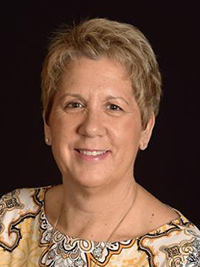
Jenee Seibert, CFO, Fulton County Health Center: We’re in the middle of an EMR upgrade, which is a total reimplementation, and prior to the pandemic, we had a training schedule in which our team would go to Boston or they would come to us. Obviously, that couldn’t happen during the pandemic, so we used Zoom meetings for training, and that worked out great. Plus, we didn’t have the cost of travel, so that was a plus.
Johnson: I’ve been trying to get my staff on a work-from-home model for two years, and during the pandemic, I was able to do it in a week. Just recently, we implemented a new cloud-based platform that enabled us to put all of our revenue cycle technology on a single platform. That has been very helpful in monitoring the performance of various tools so that we’re aware of issues when they occur and can respond quickly.
How do we prepare and manage the increased number of uninsured patients from a revenue cycle perspective? What types of strategies are your organizations planning or deploying?
Peterson: This is something that is not new for us. There’s always a trigger, whether it’s unemployment; whether it’s high-deductible plans. One strategy we use is patient financing. We’ve had great success with that. We also have employed financial advocates who are certified application counselors in the marketplace. We’ve placed them in the emergency department, so that once patients have been treated and are waiting for test results, the financial advocate can process their application for assistance in the room. We’ve had good success with that as well.
Read: The younger population seems to be at the target of the second wave of the coronavirus, and the propensity for them not to have insurance is higher. Many younger people also have lost their jobs. I do think we’ll see an increase in the uninsured, and we’ll just have to address it one by one. We have a charity care program in effect as well as an indigent program for the county, so we continually keep an eye out for patients who may qualify for assistance.
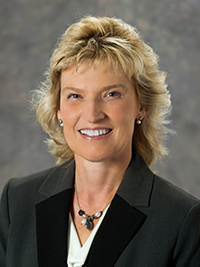
Pamela Ott, CFO, Northwest Indiana Region, Franciscan Alliance: When it comes to the uninsured, we’re preparing for an increase and managing that from a revenue cycle perspective in similar ways as others have mentioned, but we’re also recognizing the need for “all hands on deck” when it comes to revenue recovery. We’re continually seeking new opportunities to increase revenue or reduce expenses. There is an increased level of pressure on financial performance. From a finance perspective, the impact of the pandemic on revenue has been devastating. We’re projecting some relatively significant increases in bad debt and charity care, probably more than we believed we would [at the start of the pandemic]. We have to continue to prepare ourselves for the ripple effects of the pandemic’s impact and identify strategies to offset that impact.
Bittner: I do think that health systems that are investing in value-based payment models are seeing reductions in total cost of care. For us, it’s not just about providing an upfront office-visit component. We’re also expanding care capabilities in the home so we can discharge patients sooner but monitor them remotely and provide access to specialists via telehealth capabilities. Those efforts, in totality, will help reduce overall cost of care. And if you’re participating in a value-based program that rewards reductions in total cost of care, it does provide opportunities from a revenue perspective.
What other types of innovations are you considering for cost reduction and/or improved performance of your revenue cycle operations?
Johnson: We’re identifying opportunities to reduce the costs associated with each of our revenue cycle vendors so that we don’t pay millions of dollars to companies to perform tasks we are capable of doing. For example, we have a vendor that manages our emergency department [ED] denials. We created a bot that grabs the patient’s records from the ED, creates the clinical appeals letter in response to the payer and uploads the letter to the payer’s website. We have also been able to automate repetitive tasks we used to pay a vendor to do based on volume.
Limbocker: We’re starting down a project with one of our large commercial payers to try to knock down barriers and create efficiencies between ourselves. We’ve formed a working group to identify ways to reduce bad debt and invest in technologies and processes that reduce the administrative burden around payer rules that create unnecessary cost for us. We’re seeing great examples of gains made in these areas by healthcare organizations across the country. It’s a dream, but we have to get there together — payers and providers — if we want to reduce total cost of care.
Peterson: As a system, we’re moving to a single IT platform for all six of our hospitals to gain efficiencies in the revenue cycle — even in the middle of the COVID-19 pandemic.
Gallagher: We’re examining opportunities to increase visits that do not have a billing or collections component, similar to Amazon, where consumers pay upfront. For example, in the future, our patients may be able to pay cash for a CT scan at a much lower rate. In an era of consumerism, I think the market is going to shift this way.
How are the economic and operational pressures of the pandemic changing the healthcare finance system today? Post-pandemic? What would you like to see on the other side of the pandemic? What would revenue cycle look like?
Peterson: Clearly, managing expenses, especially labor expenses, is going to be one of our biggest challenges. So will having the ability to flex our revenue cycle staff up and down based on volume. We also need to make sure we’re able to manage our risk, but not adding costs to the organization in doing so. It’s a process that requires us to look at everything differently and to consider: How can we do things in a simpler, more effective way? Where can we squeeze costs out of our processes?
Ott: I agree. We need processes that are not only simpler, but also more patient friendly. If we can continue to move the dial on consumerism, that will be critical — not just in offering self-service technologies, but also developing innovations that improve the patient financial experience at every point of the patient’s spectrum of care.
Bittner: What the pandemic has allowed us to do is develop a stronger team, virtually, by drawing on our cultural competencies and investing in our talent in ways we wouldn’t have been able to do outside of the pandemic. We’re able to hire colleagues from all over the country, versus relying on a geographical area for talent, with people who have 20 years of experience in healthcare revenue cycle rather than six months of experience. That has increased our level of sophistication in approaching revenue cycle challenges. Ultimately, these investments will increase operational efficiency and drive revenue cycle success.
Johnson: I definitely agree: The revenue cycle of the future is at home. We first saw that shift to remote work with coders: They live everywhere, so why can’t a biller? Today, we provide all of our staff training and orientation sessions at home, and it is happening in half the time that it did when staff worked in the hospital.
About Cerner
Cerner’s health technologies connect people and information systems at more than 27,500 contracted provider facilities worldwide dedicated to creating smarter and better care for individuals and communities. Recognized globally for innovation, Cerner assists clinicians in making care decisions and assists organizations in managing the health of their populations. The company also offers an integrated clinical and financial system to help manage day-to-day revenue functions, as well as a wide range of services to support clinical, financial and operational needs, focused on people. For more information, visit Cerner.com, The Cerner Blog, The Cerner Podcast or connect on Facebook, Instagram, Linkedin or Twitter. Nasdaq: CERN. Smarter Care Better Outcomes. Healthier You
This published piece is provided solely for informational purposes. HFMA does not endorse the published material or warrant or guarantee its accuracy. The statements and opinions by participants are those of the participants and not those of HFMA. References to commercial manufacturers, vendors, products, or services that may appear do not constitute endorsements by HFMA.






